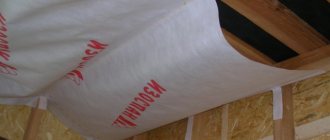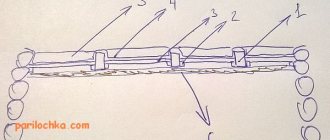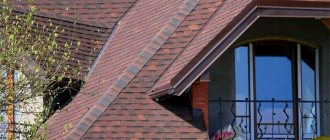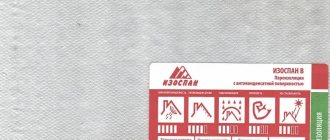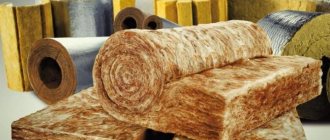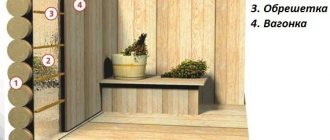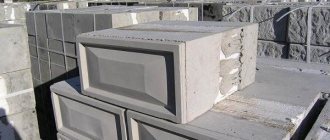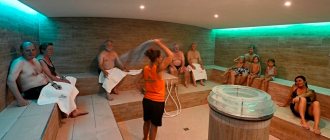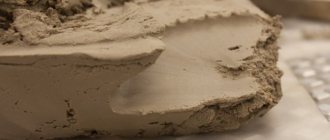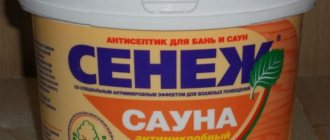Wood and humidity are incompatible things. Moisture has a negative impact on any wooden products. Even in small quantities, it gradually penetrates the structure of the tree and destroys it from the inside, activates the processes of decay, and due to increased humidity, mold and mildew appear on wooden products over time. When installing wooden floors in a house - especially if they are laid on the lower floor - you should take care of high-quality vapor barrier. A membrane material such as Izospan B has proven itself well, instructions for use for flooring in a wooden house are presented in this article.
Izospan B: instructions for use for floors in a wooden house
Izospan V, 70 sq. m.
Uninsulated pitched roofs
According to the manufacturer's instructions, steam and waterproofing materials Izospan D (DM) are used in non-insulated pitched roofs. If you plan to insulate the roof in the future, then the best solution would be to choose a reinforced superdiffusion membrane from the Izospan AQ series (proff or 150 proff).
The structure of the roof in section looks like this:
Installation of waterproofing
Laying Izospan begins from the roof eaves, rolling it out on the rafters in horizontal sheets.
This is how the first strip of waterproofing is laid
The lower edge of the first row is lowered onto the drain drip and secured with Izospan KL+ tape.
Important! You need to remember how to lay Izospan on the roof: Izospan D (DM) - smooth side up, Izospan AQ - logo up.
The waterproofing is laid with a slight sag between the rafters - up to 2 cm. The upper panel should overlap relative to the bottom by at least 15 cm. If the length of the panel is not sufficient to cover the entire slope in length, then the extension is carried out along the rafter leg (the overlap size is similar - from 15 cm). All overlaps must be taped with Izospan KL+ tape.
On a ventilated ridge or ridge (when using Izospan D or DM), a gap about 10 cm wide is left in the waterproofing layer.
On a non-ventilated ridge or ridge (when using Izospan AQ proff or 150 proff), the waterproofing is laid with a bend on the opposite side of 15 cm and the joint is glued with Izospan KL+ tape.
The waterproofing of multi-gable roofs is more complicated than that of a gable, hip or half-hip roof. Here it is necessary to waterproof the valleys with a separate sheet.
Valley device
The film is rolled out along the entire length of the valley and fixed to the boards and rafters. The connection with the waterproofing of the slopes goes like this:
The waterproofing is also fixed to the rafters using a stapler. The final fastening is carried out using a batten attached to the rafters. Before installation, sealing tape is glued to the surface of the rail facing the waterproofing.
Product range overview
Varieties of Izospan A differ in strength and structure
Each group of materials includes modifications with different structures. The mechanism of action of all membranes of one group is the same, but the structure and properties are different.
The Izospan A line includes:
Izospan B and C are types of vapor barrier with anti-condensation film. Their purpose is the same and they differ only in strength.
Insulated pitched roofs
The roofing pie of an insulated pitched roof looks like this:
If additional insulation of the slopes is necessary from the inside, a counter-lattice is installed along the rafters for another layer of insulation.
Waterproofing
Izospan AQ (proff or 150 proff), AS 130, AS, AM, A membranes are used as waterproofing. The choice of a specific material depends on the type of roofing and the attic insulation contour.
So, for combined roofs with a U-shaped (or trapezoidal) insulation scheme, the roof of which has a relatively small insulation area, it is recommended to choose reinforced membranes with high vapor permeability (water vapor flow density) - Izospan AQ or AS. And, for example, Izospan AM, according to the instructions for use, has almost 2 times less tensile strength and 12% lower maximum water vapor flux density.
Features of waterproofing installation
How to properly lay waterproofing is described in the previous chapter. The only difference between the waterproofing of an insulated roof is that there is no gap left for superdiffusion membranes in the ridge area - the vapor-permeable properties of the materials are sufficient to ventilate moisture from the roofing pie.
Scheme of waterproofing with superdiffusion membrane
In an insulated roof with a slope angle of more than 35°, you can use the Izospan A diffusion membrane. It is mounted on the rafters with a slight sag, but so that it does not touch the inside of the insulation. As a result, there should be two air gaps under the roof measuring 3-5 cm:
The peculiarity of this material is that on one side it has a rough surface that can hold condensate until conditions are created for its weathering. And this side is placed inside the roof.
Such a device (with two ventilated gaps) is recommended if a large amount of condensation forms on the inside of the coating:
In this case, a gap is left near the waterproofing in the area of the ridge to allow condensation to erode.
Important! If Izospan A lies on the insulation, it will lose part of its waterproofing properties.
On roofs with a slope angle of less than 35°, Izospan superdiffusion membranes of AM, AS or AQ brands are used. They can also be laid on slopes with any slope angle. These materials are laid directly on the thermal insulation. They are suitable for all types of roofing, including profiled metal coverings: corrugated roofing sheets and metal tiles.
Vapor barrier
Izospan grades RS, B, DM or C are used as a vapor barrier for insulation. These are materials with a rough surface that can retain moisture vapor until conditions for its weathering appear.
This is what the side with the anti-condensation function looks like
Important! You need to remember which side the vapor barrier is laid on - the rough side facing the attic room (used attic).
The rules for laying Izospan RS (B, DM, C) in the roof are as follows:
Useful tips
Izospan is not installed on a plastered ceiling. The reason is that the interior decoration will suffer if the membrane is on top, because moisture will accumulate under it, destroying the coating and stimulating the formation of fungus. There is no need to use foam or polystyrene foam film. The latter do not have vapor permeability, so they act as insulators.
In a room where Izospan is laid on the ceiling, ventilation is important to reduce the percentage of moisture in the air. If the material is torn in the middle during installation, the damage is sealed with construction tape or tape placed between the sheets. This is done in two or three layers so that the cut does not spread when the membrane is pulled. The installation process is clearly shown in the video below.
Izospan instructions for use. Izospan A, B, C, D, F
Izospan is an insulating film coating. The main purpose of the film is to ensure that the original thermal insulation characteristics are maintained throughout its entire service life. It is difficult to imagine a modern construction project without the use of various types of thermal insulation. Mineral wool, Penoplex, Izolon, Izover, various polystyrene foams and simply polystyrene foam - all these materials require their own protection.
To create a barrier at the stages of the construction process, to perform the function of protective insulation for thermal insulation, this is the true purpose that isospan vapor barrier successfully fulfills. Despite its apparent simplicity, the material differs by type.
We bring to your attention – Izospan instructions for use. Figure it out: which side to lay the isospan on. Consider the isospan technical characteristics, and the installation method.
Worthy competitors of isospan:
Before moving on to a detailed review, it should be clarified that the films are presented by the manufacturer in a wide variety and have different purposes. Vapor barrier films and membranes are divided into absolutely vapor- and water-tight and partially permeable to moisture only in one direction. Some of the materials successfully complement thermal insulation, enhancing its characteristics.
A little about the manufacturer: why does everyone know about it?
Gexa company is one of the largest manufacturers of nonwoven materials for building insulation. The company itself is relatively young, operating since 1998 and began as a small family company. Today, Gex already employs more than 2,000 employees, and even has its own representative offices in neighboring countries.
Thanks to the availability and thoughtfulness of its products, Hexa quickly captured a large part of the market for similar products, while also developing geosynthetics for road construction and a stable production of disposable clothing for medical workers. Today there are about 15 of its representative offices in Russia.
By the way, Izospan is one of the very first brands of insulation produced domestically. Among builders, all these films and membranes are so well known that they have already received a household name. True, today the company has to actively fight against mass counterfeiting of its films, which differ in quality for the worse and spoil the entire impression of the brand.
Also, Izospan films are well known among the population due to the fact that they are always available. This is a credit to Hex's logistics system. But sometimes you have to look for other brands all over the city; you’re probably familiar with this situation.
In addition, Izospan is constantly working to improve its product; for example, it recently released a three-layer moisture-windproofing membrane with an anti-condensation coating. Another interesting new product is heat-saving insulation based on kraft paper with lamination with metallized lavsan, which we will talk about later.
Vapor barrier isospan technical characteristics
Izospan has various applications, taking into account the field of construction use. Isospan, a type of insulation unique in its structure, has individual technical characteristics and its own labeling.
Manufacturers classify their products by letter indices A, B, C, D, F, R. The combination of letter indices adds numerous variety, applications and installation of isospan. Each new designation assumes its own isospan application. This fact must be taken into account when building your home.
roof vapor barrier isospan
Izospan A
The membrane, like a check valve, freely allows water vapor to pass through from the thermal insulation side. Does not interfere with the natural ventilation of the insulation. On the other hand, it reliably blocks the penetration of moisture from the external atmosphere, prevents the formation of condensation, and prevents the wind from destroying the structure of the insulation.
Due to the water resistance of the material on the outside, membranes are widely used in roofing structures and are widely used as protection for walls and ventilated facades of buildings and structures for any purpose.
The waterproofing property possessed by the isospan membrane prolongs the service life of the thermal insulation for a long time. Even the best insulation is destroyed over time under the influence of wind; the use of Izospan A will be the ideal solution to protect the outside of the house.
In a nutshell, we will clarify which side to lay Izospan A towards the insulation. The question of which side of Izospan A should be laid is far from idle. As we noted, its operation is carried out on the principle of a check valve. Or, if you want: – let everyone out, don’t let anyone through. The membrane must be laid on the outside, on top of the insulation.
Roof vapor barrier
Water vapor barrier of the roof starts from the bottom. When laying isospan A membranes, contact with the thermal insulation material should be avoided. Touching the membrane significantly reduces its waterproofing properties.
Probably those who went camping with their grandfather’s canvas tent noticed that if during rain you run your finger along the “roof” from the inside, then literally after 10 minutes it will drip in that place. It is for this reason that laying Izospan A is allowed only with double lathing.
Isospan flooring is carried out outside the thermal insulation on a lathing made of slats. The use of a membrane increases the degree of insulation and extends the life of the entire structure.
It is extremely important to monitor the absence of possible swelling or sagging during work. Otherwise, you will become a constant listener to gusts of wind with the characteristic sounds of a membrane beating on the roof. Thin slats are enough to secure isospan A, leaving 2-3 centimeters of free space to the insulation.
The purpose of vapor barrier work
Wooden structures are very susceptible to moisture. This can cause the wood to swell and warp. The floor is an area that can come into contact with moisture on both sides. Soil moisture, as well as the constantly changing microclimate of the room, negatively affects the floor of the building.
In kitchens and bathrooms, water can often spill on the floor, although the humidity in these rooms is always high. This two-way bombardment of moisture can very quickly destroy the foundation or lead to the appearance of mold or mildew in the house.
In view of this, it is advisable to hydro and vapor barrier the floor in a wooden house. Thanks to such building material as Izospan for flooring, it is possible to qualitatively protect wood from moisture and condensation.
Izospan B
As we found out, isospan A, firstly, protects from the wind, and secondly, it creates a powerful hydrobarrier for the insulation. There remains a danger in the form of condensation, wetting of the insulation - condensation, which, before passing through the membrane in the form of steam, saturates the thermal insulation with moisture.
Humidification by only 5% will reduce the thermal insulation performance by half. The further prospect is the penetration of condensation onto the metal tiles, with the subsequent transformation of the roof into a colander.
The anti-condensation surface in combination with the steam and waterproof effect will save you from such troubles. When carrying out installation work on arranging the roof, you must clearly understand that even the best insulation for the roof is gradually saturated with water vapor.
By creating a barrier to internal vapors, Izospan B will serve as a kind of vapor barrier. The material consists of two layers, a layer with a smooth structure is adjacent to the insulation during installation, the second fleecy side is designed to absorb condensation.
That is why the installation of the coating is always carried out with the fleecy side down, with a gap to the finishing materials, for ventilation and drying. Type B is laid with an overlap with an overlap of at least 10 centimeters on the insulation side and secured using a construction stapler or another method.
Types of polymer film
The following types exist:
- Izospan series “A” is suitable for external work. It insulates the roof, walls, facades from wind and moisture, but does not prevent internal steam from ventilating outside. This became possible thanks to the structure of the fabric, which is smooth on the top side and covered with pile on the inside.
- Izospan "B" is used for interior decoration. The vapor permeability of this type is lower than that of its predecessor, since the method of applying the material has different technologies. They help preserve the properties of building materials for many years, as they prevent the formation and deposition of steam on internal structures. It is this option that is laid on ceiling structures and serves as a reliable protector against vapor formation.
- Izospan “C” is used for interior decoration, but it also has an additional insulation effect. Mainly used for floor insulation. It has the effect of heat reflection and energy saving.
- Izospan type "D". These are connecting tapes. During installation, it is important to have all materials produced by one company. Tapes are necessary when attaching the main sheet for better sealing.
Connection tape
*
Polymer types of film have a number of common essential qualities; this became possible thanks to the development of new technologies in the field of construction and reconstruction.
Izospan D
High-strength, completely moisture-proof waterproofing material. Polypropylene sheet with one-sided laminated polypropylene coating. The versatility of the moisture-vapor-proof material implies widespread use in construction technologies for the construction of any type of structure.
Izospan D successfully withstands moderately strong mechanical loads, is resistant to tearing, withstands strong gusts of wind, and in winter copes with heavy snow loads. In comparison with other similar films, Izospan D has gained fame as the most durable and reliable option.
Izospan D Area of application
In any type of roof, as a barrier preventing the formation of under-roof condensation. Widely used in the installation of hydro- and vapor barriers during the construction of buildings and structures. Protection of wooden structures. The material largely resists negative atmospheric phenomena.
Izospan D is often used on construction sites as a temporary roof covering and installation of a protective wall in objects under construction. Such a roof or wall can last up to four months.
Type D is especially popular when constructing concrete floors that require a waterproofing layer to protect against earth moisture.
Application
If there is a task to preserve the internal parts of the home from the influence of vapors generated as a result of life activities, and to extend the service life of the insulation, then the correct solution would be to use the vapor barrier option with the letter “D”.
Recently, more and more owners of country houses understand the importance of the role played by vapor barrier materials, the constantly growing demand is a strong confirmation of this.
Work is carried out from the lower element of the roof and gradually proceeds towards the top. During installation, the joints are glued together with SL tape, similar to double-sided tape.
An adhesive surface on both sides connects two vapor-waterproofing sheets. The laid isospan is secured to the rafters with wooden slats or staples from a construction stapler.
To summarize our review, it remains to add that the manufacturer produces 14 types of similar roll insulation. We have considered only four main types. The buyer, guided by the characteristics of different types, always has the opportunity to buy isospan specifically for his needs.
In addition, the manufacturer does not stand still and is constantly expanding the range of products, for example, there is a film option with fire retardant additives.
From our review it is clear that working with the material does not require complex special skills and can be done by almost any man. Ease of use and low installation costs make this building material have a wide range of uses.
The vapor barrier material will completely take over the functions that will ensure the reliability and long service life of your home and industrial thermal insulation.
Source
Required tools and materials
To work with Izospan B, you need to ensure that you have a certain number of tools:
- scissors - for cutting material;
- tape measure or ruler - for applying dimensions and measuring material;
- fastening elements - nails, self-tapping screws, both options are used with galvanization;
- adhesive tape used in construction - for gluing the joints of individual sections of material;
- stapler - will allow you to quickly attach Izospan V to the base (used only for wooden bases);
- slats, metal profiles - they can also be used to fasten the material, but the need for their use will depend only on the type of final finishing of the room.
What is needed to work with Izospan
Insulated pitched roofs
MATERIALS USED
* In the case of insulation of an attic space using a U-shaped pattern or a trapezoidal pattern, it is recommended to use reinforced material Izospan AQ proff as hydro-wind protection.
** The use of reflective vapor barrier makes it possible to reduce heat loss in a room, making it possible to save up to 10% on its heating (according to the results of laboratory tests) due to the ability of the metallized surface to reflect thermal radiation.
HYDRO-WINDPROOF MEMBRANE
In the design of an insulated pitched roof, a hydro-windproof membrane is used to protect the insulation and load-bearing structural elements from sub-roof condensation, wind and precipitation penetrating under the roof covering. The hydro-windproof membrane does not prevent the escape of water vapor from the insulation into the ventilated gap.
INSTALLATION INSTRUCTIONS FOR HYDRO-WINDPROOF MEMBRANE
Installation begins from the bottom of the roof. The hydro-windproof membrane (Izospan AQ proff, Izospan AQ 150 proff, Izospan AS 130, Izospan AS, Izospan AM) is rolled out on the roof rafters with the logo side facing up. The lower edge of the first row of the hydro-windproof membrane is placed on the drip edge and glued to it using double-sided connecting tape Izospan KL+.
When laying a hydro-windproof membrane in the eaves overhang area, the formation of folds that would prevent the natural drainage of moisture from the surface of the material should be avoided.
The hydro-windproof membrane is laid without tension. Installation is carried out with horizontal sheets, overlapping (the width of horizontal and vertical overlaps is at least 15 cm). The material is fixed to the rafters using a construction stapler.
If the remainder of the roll is not enough to cover the entire width of the roof, then the vertical overlap of the membrane sheets is performed on the rafter leg. Excess laid material is trimmed along the rafter leg.
A vertical overlap of at least 15 cm wide is made on the rafter leg and the membrane is fixed using a construction stapler.
Next, installation of the material continues according to the standard scheme.
In the valley, the sheet of hydro-windproof membrane is rolled out over the valley boards along the entire length of the valley and fixed using a construction stapler along the upper surface of the valley boards, as well as along the rafters (no closer than 30 cm from the axis of the valley). The lower edge of the material is placed on the drip and glued to it using double-sided connecting tape Izospan KL+.
The sheet of hydro-windproof membrane from the left slope is placed onto the valley with an overlap of at least 15 cm from the valley board of the right slope and is fixed using a construction stapler along the upper surface of the valley boards, as well as along the rafters (no closer than 30 cm from the axis of the valley). Excess material is cut off. The lower edge of the hydro-windproof membrane fabric from the left slope is glued to the drip edge and to the material laid in the valley using double-sided connecting tape Izospan KL+.
General information
The purpose of the material is to perform the following functions:
- Providing waterproofing for the roof.
- Cutting off and filtering water vapor from the insulation layer.
Moreover, the canvas successfully retains part of the warm masses of air and steam in the volume of the under-roof or attic space, and thus convection will be blocked, that is, Izospan will not allow sharp gusts of wind and drafts to blow heat out from under the roof. Naturally, the main task of vapor insulation for a roof will remain to cut off vapors and prevent their condensation from the part of the roofing pie fastening.
Please note that in a house with an area of 60-70 square meters, at least 10 kg of water vapor is generated for residents during the day. If you use gas stoves, the volume of water that appears in the air can become 2-3 times higher.
VAPOR INSULATION
In the design of an insulated pitched roof, vapor barrier is used to protect the insulation and internal structural elements from the penetration of water vapor from inside the room, as well as to prevent the penetration of particles of fibrous insulation into the interior of the building.
INSTRUCTIONS FOR INSTALLATION OF VAPOR PROOF
The vapor barrier is installed on the inside of the insulation. Vapor barrier (Izospan RS, Izospan RS fix, Izospan B, Izospan B fix, Izospan DM, Izospan C) is laid with the smooth side towards the insulation, the rough side towards the room. Installation is carried out from bottom to top, with horizontal sheets, overlapping (the width of horizontal and vertical overlaps is at least 15 cm). The material is attached to the rafters or along the rough sheathing using a construction stapler or galvanized nails with a wide head.
To ensure the tightness of the vapor barrier layer:
Overlaps of vapor barrier sheets Izospan B, Izospan C must be glued with connecting tape Izospan KL+, Izospan KL, Izospan SL or Izospan ML proff.
Horizontal overlaps of vapor barrier sheets Izospan RS fix and Izospan B fix are glued using adhesive tapes applied to the material sheet. Vertical overlaps of vapor barrier sheets RS fix and Izospan B fix must be glued with connecting tape Izospan KL+ or Izospan ML proff.
Finally, the vapor barrier is secured to the rafters or rough sheathing with vertical antiseptic wooden slats 4x5 cm (when finishing the room with clapboard, plywood, decorative panels, etc.) or galvanized profiles (when finishing with plasterboard).
The interior finishing of the room is attached to a slatted frame or galvanized profiles with a gap of 4–5 cm between the vapor barrier and the finishing.
Preparation for installation of a water vapor barrier layer
Installation of Izospan V involves a number of preparatory works. In general, the floor pie in a wooden house is the following design:
- rough base;
- wooden logs;
- thermal insulation layer;
- waterproofing;
- finishing floor;
- finishing coating.
You should not violate the technology for installing a wooden floor, because otherwise the structure will turn out to be unreliable. The entire pie should ideally rest on brick or concrete supports, with a small ventilated area between the soil and the wood floor. The vapor barrier should be installed immediately during the construction of the house; there is no need to postpone this stage “for later”.
Vapor barrier will reliably protect against moisture and condensation
Preparations before laying the vapor barrier membrane are as follows. To begin with, all wooden parts of the floor pie are treated with a special protective compound, which will allow the tree to acquire immunity to rot and fungus for the longest possible period. Particular attention should be paid to wooden joists and the rough floor, on which the membrane material will be laid.
On a note! If the vapor barrier layer is planned to be installed in an already finished building, then before doing so it is recommended to replace all the old elements with new ones. This is a replacement of insulation and worn elements of the subfloor.
Connecting tape (adhesive tape) Izospan FL
